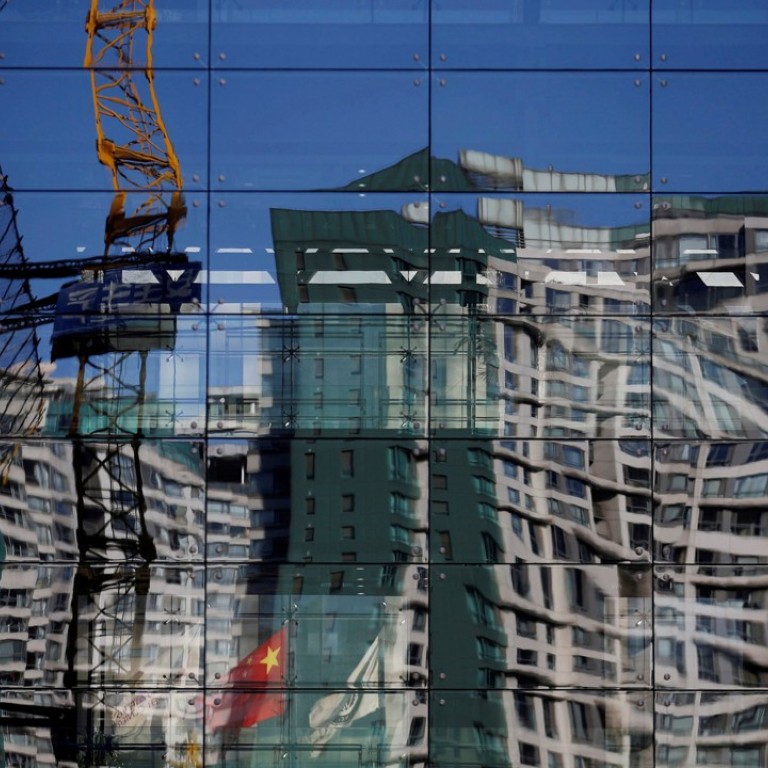
China’s August economic data lacklustre but slower investment growth ‘not caused by trade war’
Growth rate of fixed-asset investment, a key driver of nation’s economy, has been falling for some time, government spokesman says
China’s economy showed new signs of weakness in August, as fixed-asset investment growth continued on its downward trend to a record low, but a government official said the decline had nothing to do with the country’s trade war with the United States.
“Infrastructure investment [growth] has been falling for some time,” Mao Shengyong, a spokesman for the National Bureau of Statistics, said.
“As local governments continue to launch [new] legally compliant projects, infrastructure investment may stabilise, but based on our estimates, it will be difficult for [investment] growth to rebound.”
US proposing new round of trade talks with China in near future
Mao was speaking after the release of economic data for August, which showed that fixed-asset investment in the first eight months of the year grew 5.3 per cent from the same period of 2017, which was below analysts’ forecasts of 5.5 per cent and slower than the 5.5 per cent growth recorded for the first seven months.
After halting major construction projects in 2017, China has this year sought to bolster its cooling economy and counter the pressure from tariffs on its exports to the US by boosting investment in infrastructure projects. But the move was not going to make a significant difference to overall investment, Mao said.
Betty Wang, senior China economist at ANZ, said that the continued weakness in infrastructure investment was a major factor putting downward pressure on total investment growth in August.
“Overall, it’s pretty weak,” she said.
As a result, she said, the government was expected to speed up the approval of infrastructure construction projects and boost new bank lending further to help stabilise economic growth.
Fixed-asset investment has long been the driving force of China’s economy, contributing 45 per cent of its annual growth in 2016.
Trade war thaw? Beijing welcomes surprise US offer to resume high-level talks
Meanwhile, industrial output in August rose 6.1 per cent year on year, slightly better than the 6 per cent gain forecast by analysts, while retail sales grew 9 per cent in the month, against an 8.8 per cent forecast, the statistics bureau said.
China reported earlier that its trade surplus with the United States hit a record US$31.05 billion in August. Exports in the month rose 6.9 per cent from July to US$44.38 billion, but imports fell by 0.9 per cent to US$13.3 billion.
Mao attributed the stronger growth in US exports to better efficiency among Chinese firms. But he said that some of the gains in exports and some of the rise in production might have been due to US importers accelerating their orders of Chinese goods before the new tariffs came into force.
Still, the trade war did not cause any major damage to the Chinese economy in August, the first full month since the first round of tariffs went into effect.
“The impact of the trade conflict on August data was not obvious, or if there was an impact, it was limited,” Mao said.
He was not upbeat, however, about the international trade outlook, pointing at weak statistics from the Baltic Exchange’s main sea freight index, which tracks rates for ships transporting dry bulk commodities, and the World Trade Organisation’s World Trade Outlook Indicator, which stood at 100.3 in the third quarter, just above the 100-point baseline, and suggesting a likely easing of trade growth in the coming months.
The Baltic Dry Index, a wider measure of commodity transport costs, in August slumped to its lowest since late June.
“We must continue to observe the impact of China-US trade frictions and international trade protectionism, and relevant departments will also take corresponding measures,” Mao said.
The world’s two biggest economies have been engaged in a tit-for-tat trade war since early July, with both sides having already levied 25 per cent tariffs on US$50 billion worth of imports of each other’s goods.
US President Donald Trump said last week he was ready to impose tariffs on an additional US$200 billion worth of Chinese goods “very soon”, and could even sanction tariffs on a further US$267 billion worth of goods if Beijing did not offer trade concessions.
As trade war escalates, China intensifies role of state-owned enterprises
Samuel Tse, a Hong Kong and China economist for DBS, expects more pressure on China’s economy in the coming quarter as a result of the trade war.
“We are not so confident that the US and China will be able to solve their differences very quickly,” he said. “Meanwhile, it is likely the US will press on with its trade tariffs, which will hurt China’s exports and that may show up in the next quarter’s data.”
The risk of Chinese exporters being forced to shut down were also higher because of the trade tariffs, while the uncertainty in the economic outlook could put a dent in consumer spending and investment, he said.

